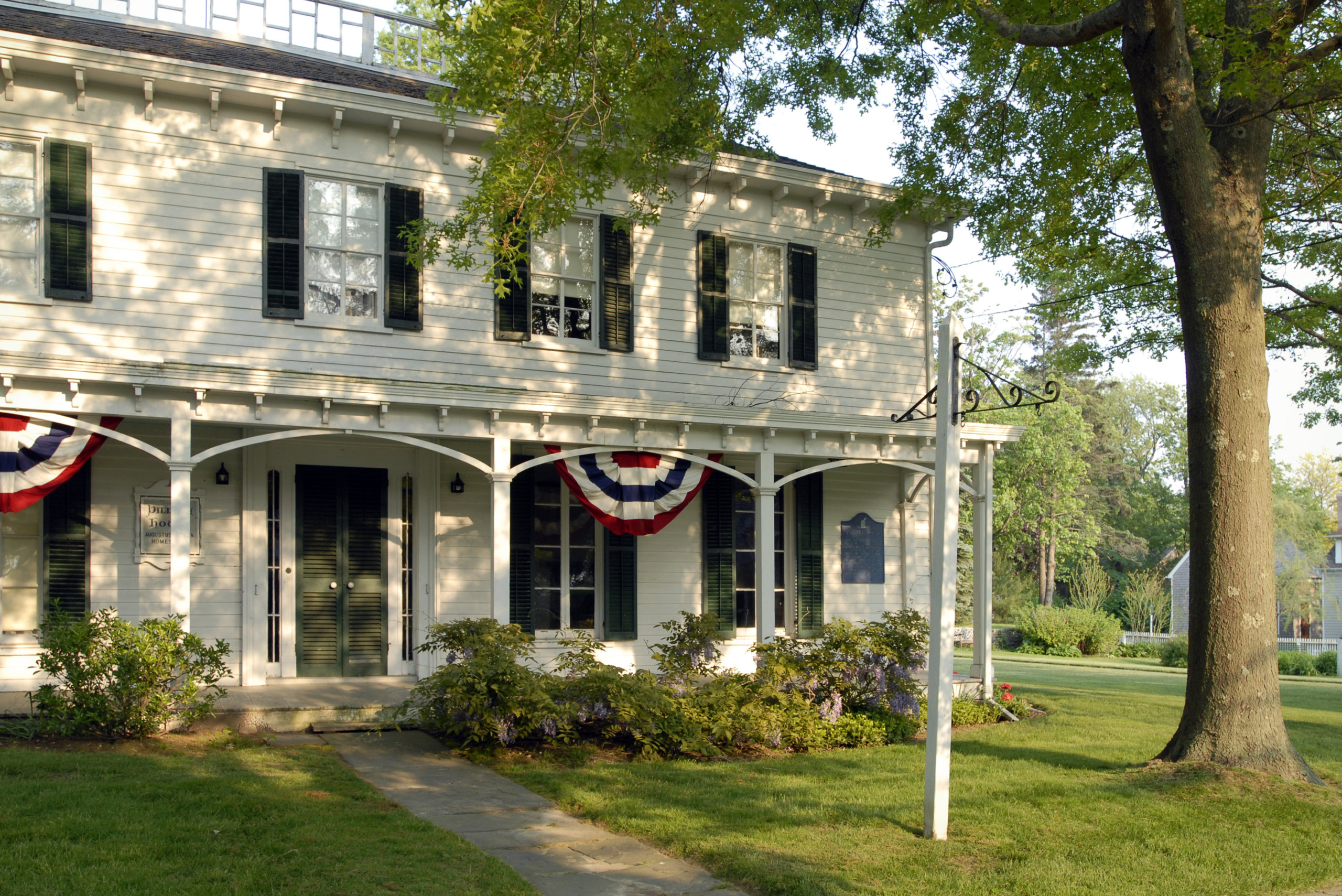Get Oriented Part II: Orient Village

Many people know Orient only for the Cross Sound Ferry to New London, CT or service to Mohegan Sun and Foxwoods casinos.
But those who rush to the ferry terminal miss a precious gem on the way. Crossing the mile-long causeway from mainland Long Island takes you to another world, where stunning North Fork vistas will remind you of the North Fork’s natural beauty and help you understand how its past is part of its present and future.
With a population of less than 1,000 residents, Orient has the smallest number of people per square mile of any community in the Town of Southold. This is the source of its charm and the reason it is often overlooked. Even residents of nearby communities tend to forget about this place of natural beauty and living history.
Orient has some of the most beautiful coastline on Long Island, from the Long Island Sound to the many pristine inlets and bays. While beach permits are required in season, this time of year welcomes visitors to walk its beaches and enjoy the onset of
spring.
Orient Village
While it is small — with only a post office, gas station and a country store — the village is big in character. This quiet, walkable village is full of historic buildings, many with plaques that relate local events.
Scott Robbins, development associate for Oysterponds Historical Society, describes Orient as “similar to Sag Harbor and Nantucket but quainter.” Buildings are modest, there is no commercial aspect to the area, and the community is tight-knit.
The Oysterponds Historic District comprises 120 buildings of significant historic value. Many date from the late 18th to late 19th century. The Orient Wharf dates back to 1740.

AndrewMillar/Getty Images
Oysterponds Historical Society
Oysterponds Historical Society, based in Poquatuck Hall on the village green, is a vital part of the local community. Consisting of seven historic buildings on 8.5 acres in the heart of the village, the OHS holds an impressive collection of over 60,000 historic artifacts, documents, diaries, works of art and archival objects from early Native American times through the 20th century.
“This is the most voluminous and diverse collection on Long Island,” says Robbins.
The community didn’t see a lot of change even as the rest of Long Island did, which is key to its preserved history. Some local families have been in the area for hundreds of years. Houses and properties were passed down within families, often with attics full of historical artifacts, which many people generously donated to the OHS.
The OHS holds a permanent maritime exhibit in Webb House and seasonal exhibits on local history in the Village House, a former boarding house and the schoolhouse. This season, exhibits include World War I photographs and primary source documents. Exhibits are free to children and members, $10 for nonmember adults. They’re open May 28 through September 25, Friday 2–5 p.m., Saturday 11 a.m.–5 p.m. and Sunday 2–5 p.m.
A series of over 30 webinars, begun in 2020 to meet the needs of the community during the pandemic, cover a range of topics and are now free on the website.
OHS hosts many community events, from pumpkin carving in the fall to tree lighting and cookie decorating in December. But the most popular event is the Fourth of July Heritage Day event, when the Declaration of Independence is read from the steps of the Old Point Schoolhouse, followed by a parade.
1555 Village Lane, Orient. 631-323-2480, oysterpondshistoricalsociety.org
Oysterponds Shellfish Company
Oysterponds Creek is home, once again, to Long Island oysters. Phil Mastrangelo, who is partner and manager of Oysterponds Shellfish Company, says the oysters are shipped all over the country and are featured at the finest restaurants in New York City.
The growing methods are sustainable and self-replenishing. The work is difficult and hands-on. “A typical in-season work day usually lasts 18 hours. The work is hard and dirty, and we are rarely not covered in mud,” says Mastrangelo.
Oysters are an important part of a healthy ecosystem. A single adult oyster filters over 50 gallons of water per day. “Oysters have a tremendously positive impact on the environment,” says Mastrangelo. “You keep eating, we’ll keep planting, they’ll keep filtering!”
631-721-7117, oysterpondsshellfish.com
Latham Farmstand
It is hard to imagine a farm more picturesque than Latham’s. The Latham family has been farming here since 1809, making it one of the oldest and largest independent farms on Long Island. Neat rows of crops roll down behind the yellow farmstand to the blue bay beyond. The farm is proudly rooted in the tradition and values of “hard work and love of cultivating the land.” In-season vegetables, fruit and flowers fill the bins from early May to late November.
20055 Main Road, Orient; 631-323-3701, lathamfarms.org



